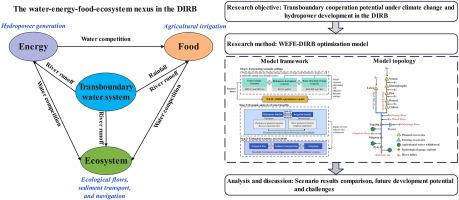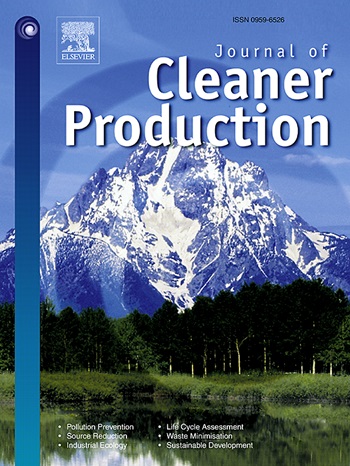Transboundary cooperation potential under climate change and hydropower development in the Dulong-Irrawaddy river basin: A perspective on the water-energy-food-ecosystem nexus
IF 9.7
1区 环境科学与生态学
Q1 ENGINEERING, ENVIRONMENTAL
引用次数: 0
Abstract
Water crises are exacerbated by accelerating climate change and increasing water demand and thus have emerged as critical risks to countries worldwide. This issue is particularly pressing in Asia's transboundary river basins, where inadequate collaborative mechanisms and uncertain future cooperation prospects heighten the risk of these crises occurring. For example, the Dulong-Irrawaddy River Basin (DIRB) is challenged by both climate change and potential large-scale hydropower development, yet lacks a comprehensive, basin-wide study on transboundary water cooperation. This study represents the initial application of an integrated Water-Energy-Food-Ecosystem (WEFE) nexus modeling framework to the DIRB, quantitatively assessing changes in economic benefits (hydropower and irrigation) and ecological responses (Ecological Flow (EF), Sediment Transport (ST), and Navigation (NG)) under future climate scenarios and hydropower development. The results show that the operation of large hydropower reservoirs will substantially increase economic benefits, with a noticeable trend of growth from the near (2030–2049) to the far future (2075–2099), fueled by climate change-induced increases in runoff. Among the three water allocation strategies, the two cooperative scenarios, the Combinatorial Benefit Optimization (CBO) scenario and the Irrigation Benefit Priority (IBP) scenario, offer significant economic advantages over the noncooperative scenario, the Hydropower Benefit Priority (HBP) scenario. Specifically, the annual economic benefits increase by 0.68 and 0.43 billion USD under SSP2-4.5, and by 0.94 and 0.66 billion USD under SSP5-8.5. To balance hydropower and irrigation benefits, the CBO scenario is preferable, as it sacrifices less hydropower than does the IBP scenario. This preference mitigates annual economic losses by approximately 0.56 billion USD under SSP2-4.5 and 0.42 billion USD under SSP5-8.5. Evaluations for various typical years also reveal that the cooperative scenarios generate nearly twice the additional irrigation benefits compared with noncooperative ones, with cooperation proving more advantageous under drier conditions. The ecological response analysis under future water benefit trade-offs indicates that operating upstream cascade reservoirs can increase downstream dry season EF and NG guarantee rates while resulting in limited sediment losses, which remain below 3%. The findings of this study indicate that potential hydropower development in the DIRB can offer substantial basin-wide comprehensive benefits, which are greatly enhanced through cooperative efforts. Additionally, the integrated methodology proposed in this study can be applied to similar challenges in other basins, helping decision-makers identify potential pathways for more cooperative and efficient cross-border water resource management in line with global Sustainable Development Goals.


求助全文
约1分钟内获得全文
求助全文
来源期刊

Journal of Cleaner Production
环境科学-工程:环境
CiteScore
20.40
自引率
9.00%
发文量
4720
审稿时长
111 days
期刊介绍:
The Journal of Cleaner Production is an international, transdisciplinary journal that addresses and discusses theoretical and practical Cleaner Production, Environmental, and Sustainability issues. It aims to help societies become more sustainable by focusing on the concept of 'Cleaner Production', which aims at preventing waste production and increasing efficiencies in energy, water, resources, and human capital use. The journal serves as a platform for corporations, governments, education institutions, regions, and societies to engage in discussions and research related to Cleaner Production, environmental, and sustainability practices.
 求助内容:
求助内容: 应助结果提醒方式:
应助结果提醒方式:


